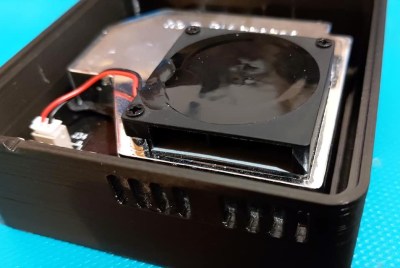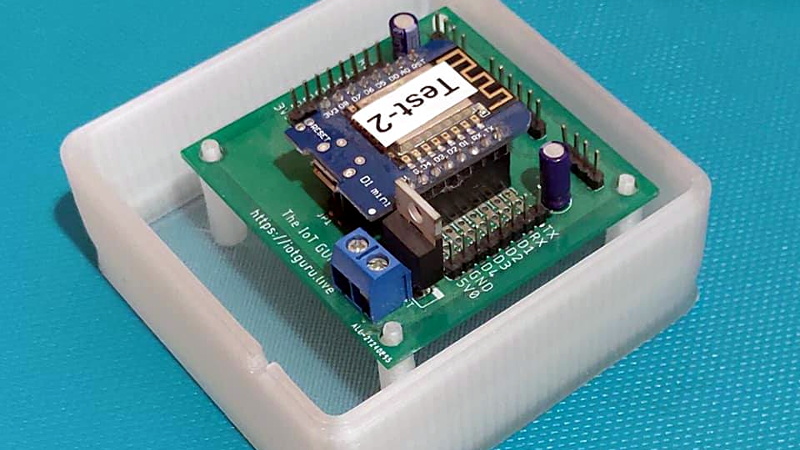It’s an unfortunate reality that for many of us, our air isn’t nearly as clean as we’d like. From smog to wildfires, there’s a whole lot of stuff in the air that we’d just as soon like to keep out of our lungs. But in order to combat this enemy, you first need to understand it. That means figuring out just what’s in the air you breathe, and how much of it. That’s where devices like the Dust Box from [The IoT GURU] can come in handy.
 Inside the 3D printed enclosure is a Wemos D1 Mini ESP8266 development board, sitting on a custom breakout PCB. This board gives you some easy expandability to add your own sensors and hardware, though in this particular configuration, the Dust Box is using the BME280 sensor for general environmental monitoring and the SDS011 laser particle sensor to determine what’s in the air. Just plug it into a convenient USB power source, make sure it’s connected to the WiFi, and off it goes.
Inside the 3D printed enclosure is a Wemos D1 Mini ESP8266 development board, sitting on a custom breakout PCB. This board gives you some easy expandability to add your own sensors and hardware, though in this particular configuration, the Dust Box is using the BME280 sensor for general environmental monitoring and the SDS011 laser particle sensor to determine what’s in the air. Just plug it into a convenient USB power source, make sure it’s connected to the WiFi, and off it goes.
But where does all that lovely data end up? That’s up to you, but in this case, the [The IoT GURU] is pushing everything out to a web interface that allows the user to view yearly, monthly, and weekly historical data for each of the parameters the Dust Box can check. This is probably a bit more granular than most of us need, but it’s a good example of what’s possible should you need that much information.
For a similar project that allows you to take your sensors a bit farther off the beaten path, checkout FieldKit, which was recently crowned winner of the 2019 Hackaday Prize.
















Looks pretty similar to what https://luftdaten.info/en/home-en/ is doing. They have initiated the construction of thousands of fine dust sensors in a kind of citizen science project. Data from all these sensors is collected and made available to the public. The data quality from these DIY sensors is not comparable with the few professional measurement stations, but they achieve a higher location coverage.
Their design uses the same SDS011 sensor. As the data from these sensors is affected by humidity, they add an extra DHT22 sensor.
It’s so true that adding one simple inexpensive data point such as a humidity sensor can considerably enhance data quality.
Projects like this will in future dramatically improve human health. Not just scute lung conditions but also late stage deceases like cancers and neural impairments. The vast majority of the two above have environmental rather than genetic caused.
I write a long post about this later as I don’t want to use up all the pixels at the top of your screen.
A bit more granular, heh, heh, heh.
I would looove to see a badge like device that we wear and perhapps has an epaper screen that displays a bit of history and current readings including humidity. If it hits a user threshold don the mask and potentially upload the data for wider consumption and archiving. Kind of like a geiger counter but for microparticules. Something thin lite and usb chargable.